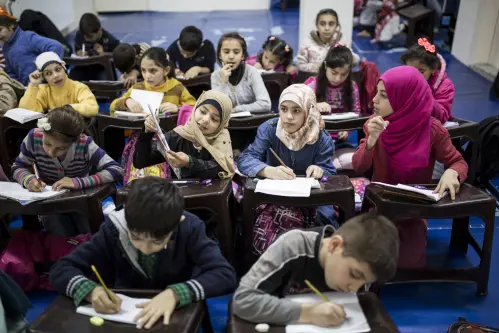This week, NBC News launched “Education Nation” in an attempt to engage the public in thoughtful dialogue about how to provide every American with an opportunity to have the “best education in the world.” The discussion focuses on many important aspects of the American education system, including dismal dropout rates, poor performances in reading and math, the role of technology and global competitiveness.
While basic skill development and workforce preparation skills are important in the American education system, a paradigm shift must take place recognizing that in order to be truly globally competitive, we must be globally competent. Educating young people to become global citizens will allow them to learn about the interdependence of the world’s systems, believe that solutions to global challenges are attainable, feel morally compelled to confront global injustices and take responsible action to promote a just, peaceful and sustainable world. While at first glance a focus on global citizenship may seem secondary in a system where basic literacy remains a challenge for many, these skills are vital. If we truly aspire to have a world-class education system in America, we must engage with the world. The challenges that face the world today—from global poverty and climate change to financial systems and conflict—require globally-minded solutions. Global competency skills are necessary so that young people can invent a future that appropriately addresses global challenges.
The Longview Foundation estimates that 10 state school systems have passed legislation in support of global knowledge and skills, and the Partnership for 21st Century Skills, an initiative involving the U.S. Department of Education and various private companies and foundations, includes global awareness as a major curricular theme. Yet according to Lisa Swayhoover, global education specialist at the National Education Association, the scale, long-term impact and connection to classroom practice is somewhat unclear. These advances come at a time when the Council of Chief State Schools Officers’ Common Core Standards, currently adopted by over 30 states, fail to mention any global competency skills.
The advent of technology and communication advancements have made global citizenship education a need rather than a luxury—and more feasible than ever before. Social entrepreneurs have developed models to integrate global citizenship education into formal and informal education opportunities for American youth. These initiatives, while developed at the individual level, are proven models that can be adopted and taken to scale. For example:
- Piloted in 2005 with a handful of students in New York City, the Global Citizen Corps program, an activity of Mercy Corps, has grown to develop 1,100 youth leaders and engage 24,000 young people around the world in eight countries. Students are able to use the internet, Web chats, and videoconferencing to have discussions, engage in dialogue and form friendships with peers from across the globe.
- The Global Citizen Year program is a cross-sector model that partners with high schools and colleges in the United States and NGOs around the world to create opportunities for emerging leaders to work as apprentices in Asia, Africa and Latin America in the year between high school and college. GCY has pledged to engage 1,000 young people in the program by 2015 to unleash a pipeline of emerging leaders to find innovative solutions to the global challenges of the 21st century.
Beyond formal programs, there are new opportunities emerging from online platforms that can augment a teacher’s innovation when it comes to implementing global citizenship education. YouTube, Skype, Facebook and Twitter allow individuals around the world to connect in ways never before possible. And American youth can take direct action using technology; for example, Kiva.org, an online direct micro-lending platform, allows individuals in developed countries to make direct microloans to entrepreneurs and students in developing countries. Creativity is the only barrier to the educational possibilities; yet, the curricular flexibility and mandate from the top must be present in order to support and value these educational innovations, not hinder them.
As we aim to reinvent America as the “Education Nation,” we must reinvent our notion of the necessary skills to succeed in the 21st century, which go beyond reading, writing and math to include global citizenship and competency. Then, American education will be “world class.”



Commentary
To be Globally Competitive, We Must be Globally Competent
September 29, 2010